This post may contain affiliate links. Please read my privacy policy.
Cotton soft, light, fluffy and the best Japanese cheesecake. This is a tried and tested Japanese cheesecake recipe. A must-bake for cheesecake lovers!
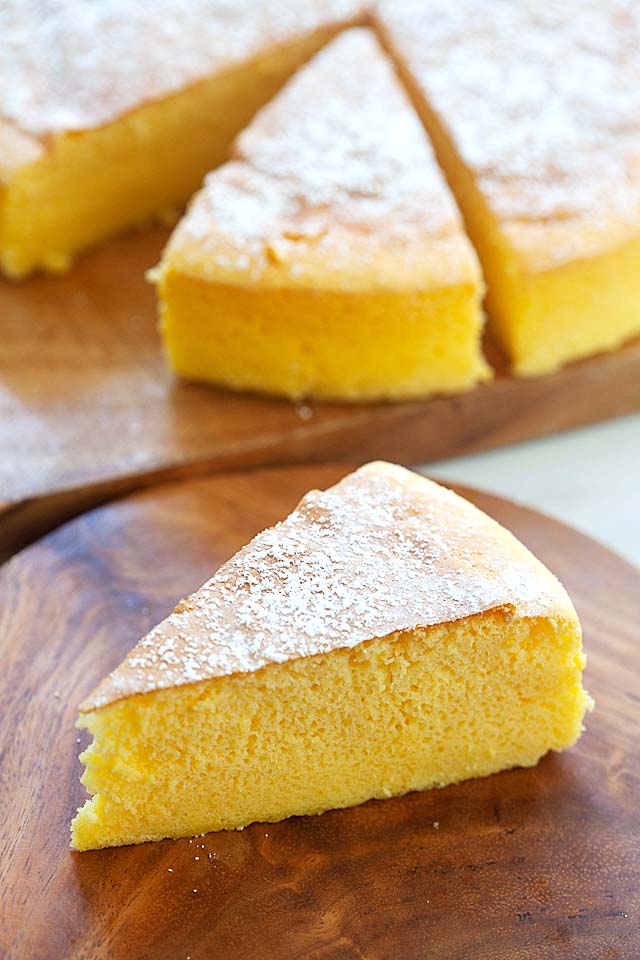
Japanese Cheesecake Recipe
Japanese cheesecake is very different from regular cheesecake.
It is cotton soft, light, fluffy and the one of the best cheesecakes I have ever tasted.
Japanese cotton cheesecake is also jiggly, due to the meringue egg white mixture in the recipe.
Make this and I will guarantee that you will never go back to regular cheesecake again!
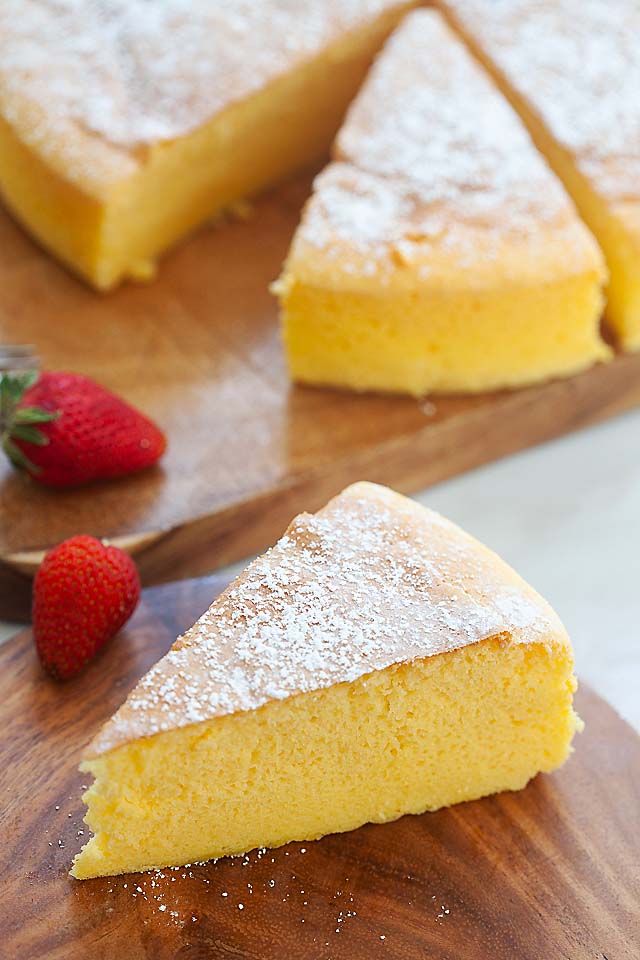
Ingredients
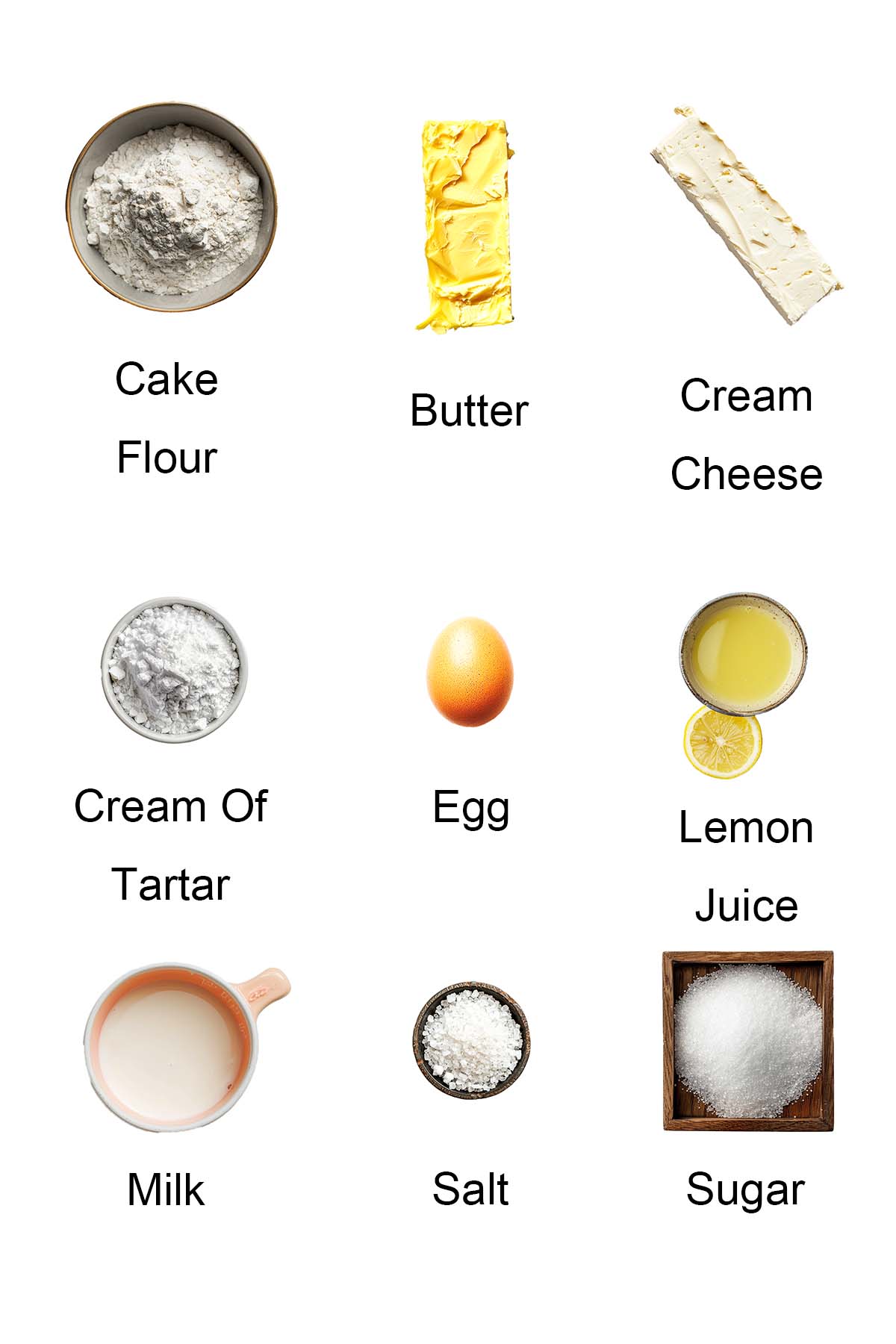
- Cream cheese
- Butter – use a good quality butter for the best results. In the United States, I always buy Challenge butter.
- Milk
- Cake flour – this lower gluten flour is idea for the cotton soft, spongy and airy texture.
- Corn starch
- Eggs
- Sugar
- Cream of Tartar – this is the secret ingredient that stabilizes the tiny bubbles in the egg white meringue. It prevents the egg proteins from sticking together, hence holding the bubbles together for the jiggly and spongy texture of this cheesecake.
- Lemon juice
Please take note that there is no baking soda or baking powder in the ingredients list as the meringue mixture will ensure that the cake rise tall.
See the recipe card for full information on ingredients.
How To Make Japanese Cheesecake
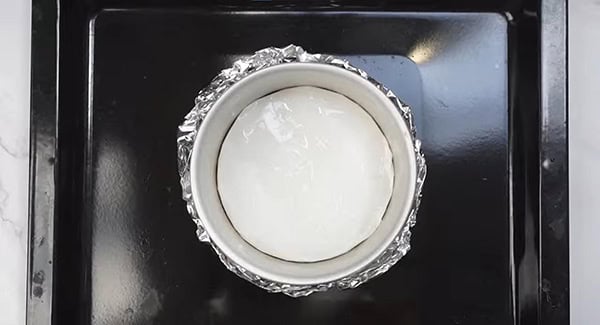
Step 1: Preheat oven to at 325°F (160°C). Prepare and measure all the ingredients and set out on your working area. I used a 9-inch springform pan. Grease the entire pan and line the bottom part with parchment paper. Please refer to notes if you use other pan.
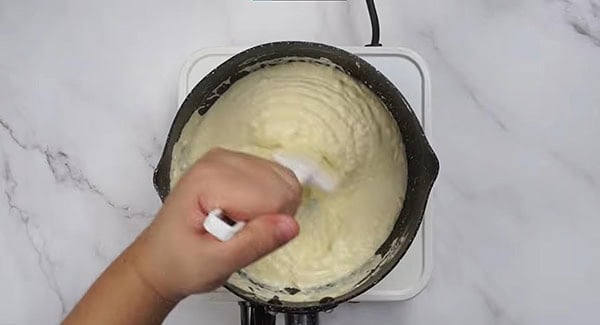
Step 2: On a stove top, melt cream cheese, butter and full milk on low heat. Use a whisk to mix well until the cream cheese melts completely without lumps. Remove from heat.
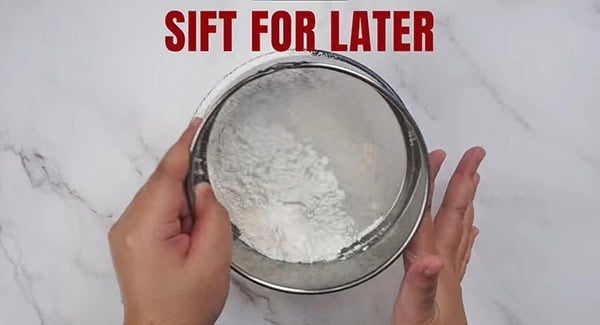
Step 3: Sift the cake flour and corn starch.
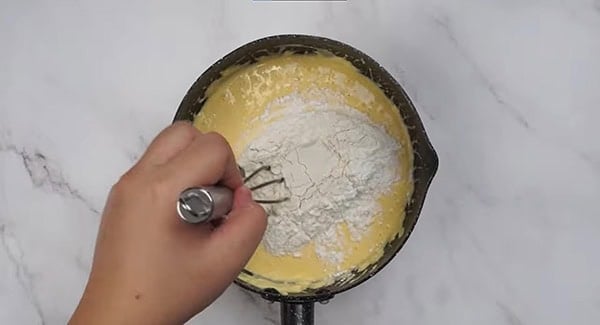
Step 4: Add egg yolks, lemon juice and salt to the cream cheese mixture. Whisk to combine well. Add the cake flour and corn starch, whisk until a smooth batter forms and there is no lump.

Step 5: Make the meringue by whisking egg whites, sugar and cream of tartar until light, foamy and soft peaks form. You can beat with a stand mixer or electronic hand mixer. I used speed 4 and beat for 1-2 minutes or until soft peaks form. DO NOT over beat.
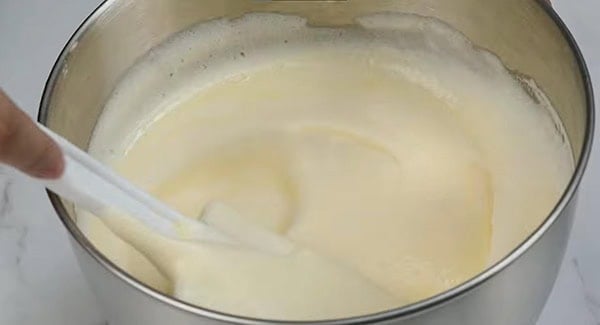
Step 6: Add the cream cheese mixture gently into the meringue, FOLD GENTLY until well incorporated.
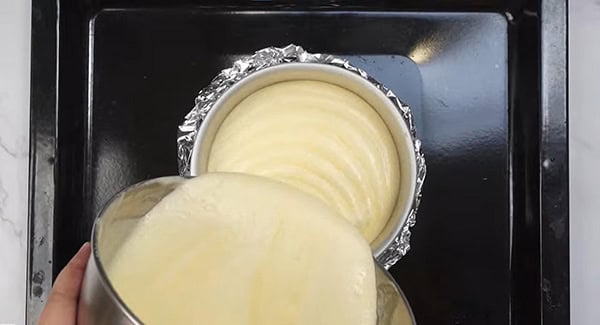
Step 7: Pour the mixture into the springform pan. Tap the cake pan gently before baking.
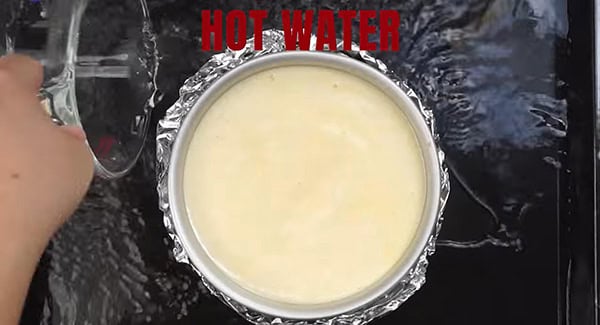
Step 8: Bake the cake using hot water bath. Place the cake pan in a larger pan and add 1 inch (2.5cm) of hot water in the larger pan. Bake at the bottom shelf of the oven for 1 hour 10 minutes.
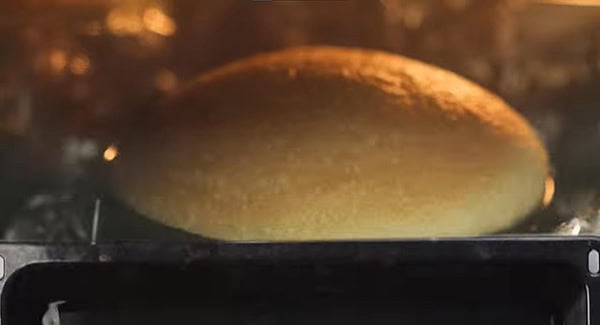
Step 9: Leave the Japanese cheesecake to cool down in the oven with the oven door open, about 30 minutes. This will prevent sudden change of temperature that may cause the cake to shrink. However, it’s normal that the cake will shrink about 1/2 – 1 inch (1cm-2.5cm) after cooling.
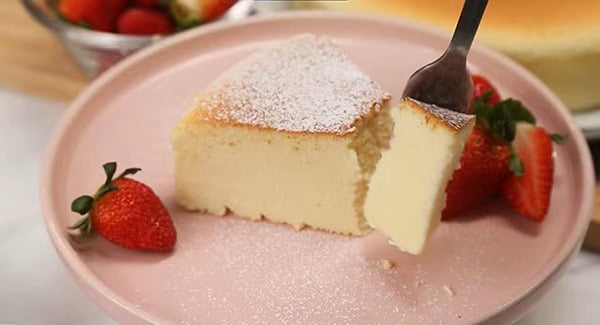
Step 10: Refrigerate the cake (with or without the cake tin) for at least 4 hours or overnight. Top the cake with powdered sugar before serving.
Baking Tips
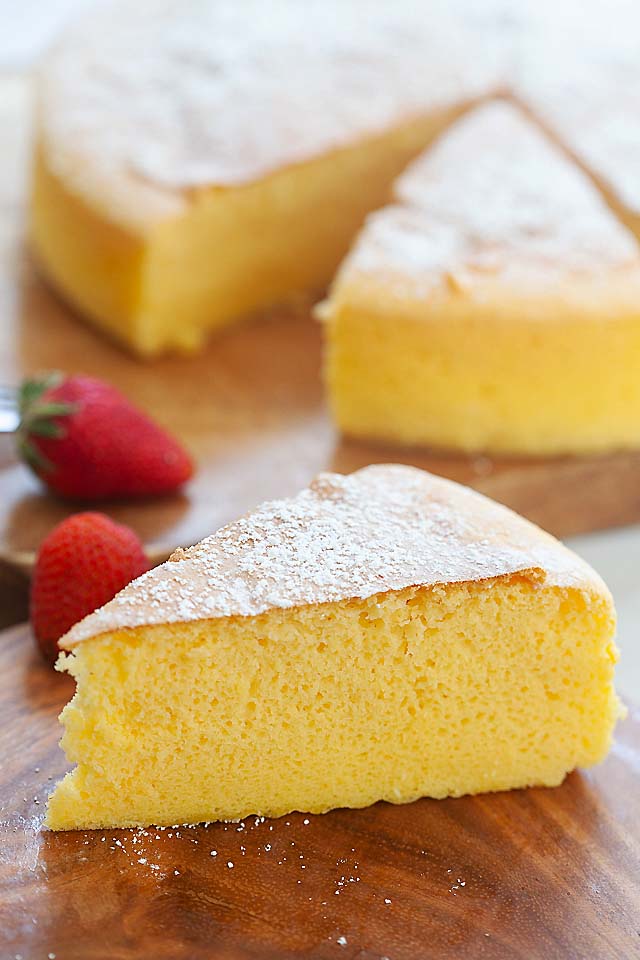
Even though DIY and homemade Japanese cheesecake is relatively easy, there are potential troubles when the cake turns out less than perfect.
For the best, jiggly and perfect result just like Uncle Tetsu, here are the tips and tricks:
- Make sure you have a smooth cream cheese mixture that is not lumpy.
- Use room temperature eggs to ensure that the meringue has the maximum volume.
- Make sure your egg whites are beaten until soft peaks form. Dot not over beat, we don’t want stiff peaks.
- DO NOT OVER MIX the meringue with the cream cheese batter. Fold very gently, do not stir or blend as the bubbles in the meringue will disappear.
- To avoid the sudden drop in oven temperature and room temperature, leave the cake in the oven with the oven door open. This will make sure that the cake doesn’t lose volume and sink.
- To avoid cracking at the top, please make sure you use a water bath for baking. The steam from the water will circulate in the oven, hence minimizing cracking at the top.
- To avoid over browning, bake the cake at the bottom part of your oven.
- Before you start baking, make sure you have all the ingredients measured up and ready. This is very important because every step has to be very precise.
Frequently Asked Questions
You can keep it in the refrigerator for a couple of days.
You shouldn’t have to worry about the leftover because this is the best cheesecake ever, and I can assure you that you won’t have anything left to keep for more than a day!
Other than springform pan and round cake tin, you can also use a 8×8-inch or 9×9-inch square pan. You can also make them into cupcakes by using cupcake tins.
Yes, you sure can. You may add 1 – 2 tablespoons of matcha powder in the cream cheese mixture if you like.
Japanese cheesecake has the lowest calories of all cheesecake. Each slice is only 214 calories.
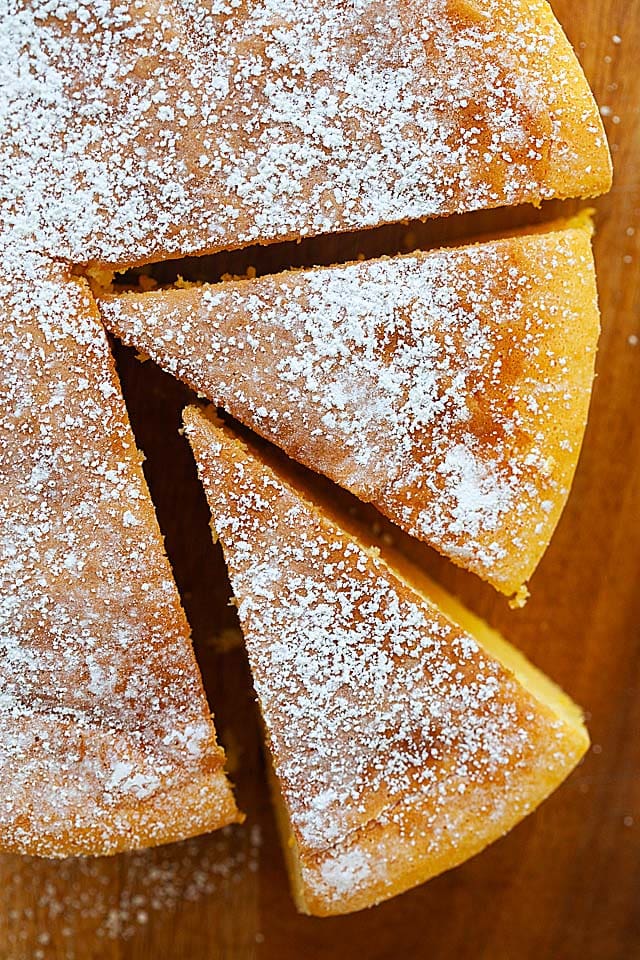
What To Serve With This Recipe
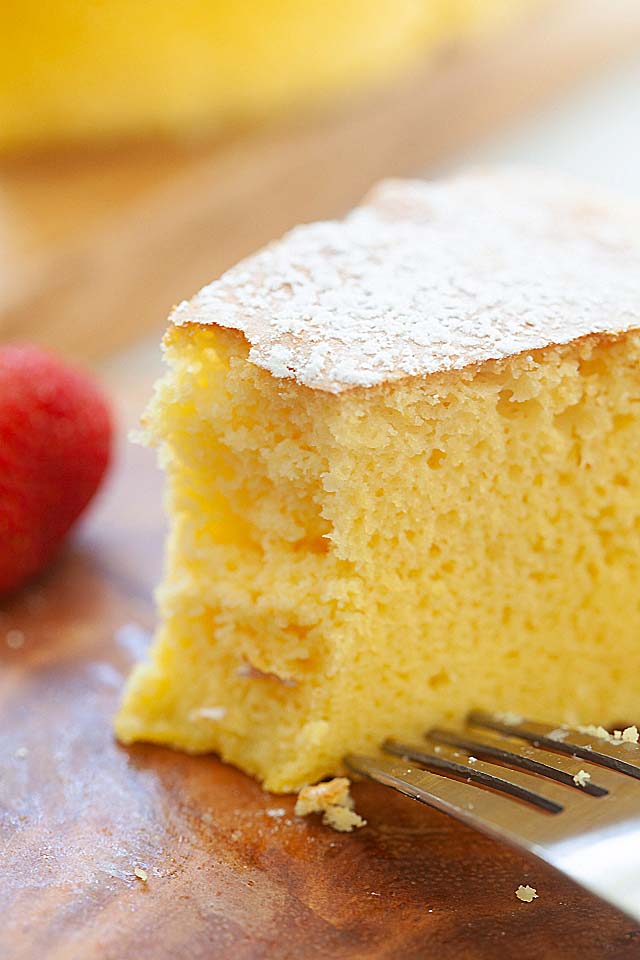
Japanese cheesecake is best served on its own, with your favorite cup of tea or coffee. For an afternoon tea, make the following desserts to go with it.
I hope you enjoy this post as much as I do. If you try my recipe, please leave a comment and consider giving it a 5-star rating. For more easy and delicious recipes, explore my Recipe Index, and stay updated by subscribing to my newsletter and following me on Facebook, Pinterest, and Instagram for new updates.
Other Recipes You Might Like
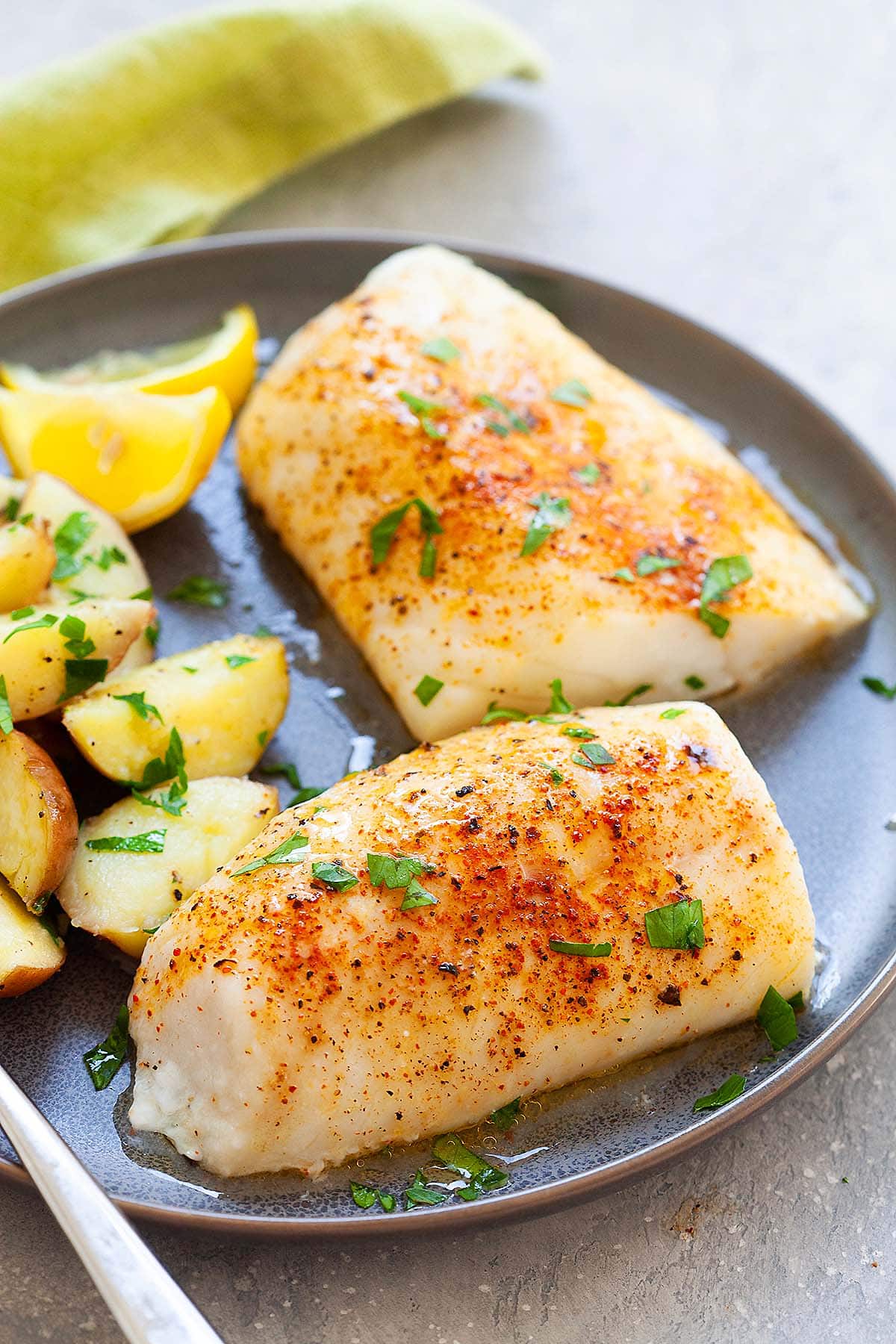
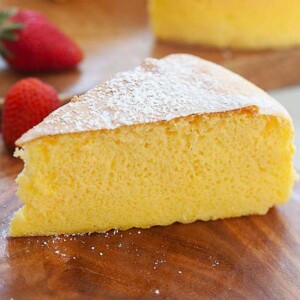
Japanese Cheesecake (Fail Proof Recipe)
Ingredients
- 8 oz (230g) Philadelphia cream cheese
- 2 oz (60g) unsalted butter
- 100 ml full milk
- 2 oz (60g) cake flour
- 1 oz (30g) cornstarch
- 6 egg yolks, room temperature
- 1/2 tablespoon lemon juice
- 1/4 tsp salt
- 6 egg whites, room temperature
- 1/4 teaspoon cream of tartar
- 5 oz (140g) fine granulated sugar
Instructions
- Preheat oven to at 325°F (160°C). Prepare and measure all the ingredients and set out on your working area. I used a 9-inch springform pan. Grease the entire pan and line the bottom part with parchment paper. Please refer to notes if you use other pan.
- On a stove top, melt cream cheese, butter and full milk on low heat. Use a whisk to mix well until the cream cheese melts completely without lumps. Remove from heat.
- Sift the cake flour and corn starch.
- Add egg yolks, lemon juice and salt to the cream cheese mixture. Whisk to combine well. Add the cake flour and corn starch, whisk until a smooth batter forms and there is no lump.
- Make the meringue by whisking egg whites, sugar and cream of tartar until light, foamy and soft peaks form. You can beat with a stand mixer or electronic hand mixer. I used speed 4 and beat for 1-2 minutes or until soft peaks form. DO NOT over beat.
- Add the cream cheese mixture gently into the meringue, FOLD GENTLY until well incorporated.
- Pour the mixture into the springform pan. Tap the cake pan gently before baking.
- Bake the cake using hot water bath. Place the cake pan in a larger pan and add 1 inch (2.5cm) of hot water in the larger pan. Bake at the bottom shelf of the oven for 1 hour 10 minutes.
- Leave the Japanese cheesecake to cool down in the oven with the oven door open, about 30 minutes. This will prevent sudden change of temperature that may cause the cake to shrink. However, it's normal that the cake will shrink about 1/2 – 1 inch (1cm-2.5cm) after cooling.
- Refrigerate the cake (with or without the cake tin) for at least 4 hours or overnight. Top the cake with powdered sugar before serving.
Video
Notes
- If you use a springform pan or loose base cake tin, make sure it’s closed tight. It’s best to wrap the base of your pan with 2 layers of aluminum foil (outside of the pan) to prevent the water bath from seeping inside the bottom part of the cake.
- If you use a 8″ round pan, it is very important to line the sides of the 8″ pan with parchment paper, make sure the parchment paper extends higher than the cake tin by about 1.5″.
- If you use a 9″ pan, you can line the bottom part and not the sides. You may line the entire pan with parchment paper, if you like.
- You can also use an 8-inch or 9-inch square pan.
- If the cake shrinks too much, the main reason is over mixing the egg white mixture with the cream cheese mixture.
- Beat the egg whites until soft peaks form, FOLD VERY GENTLY using a flipping motion.
- Do not stir or blend vigorously.
Nutrition
Nutrition information is automatically calculated, so should only be used as an approximation.
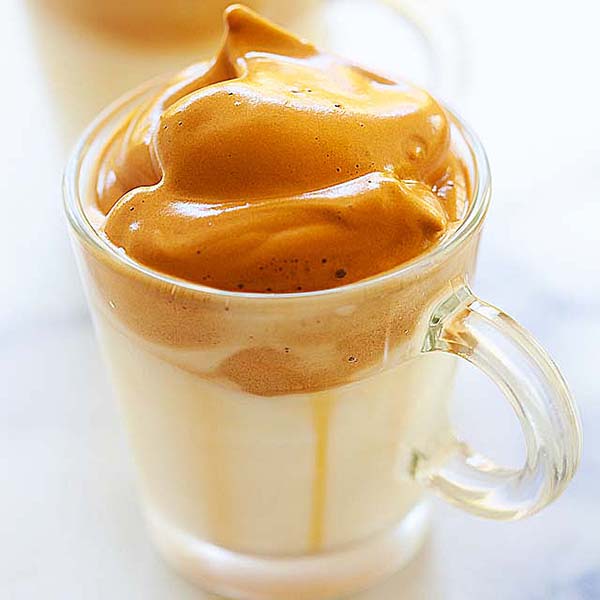
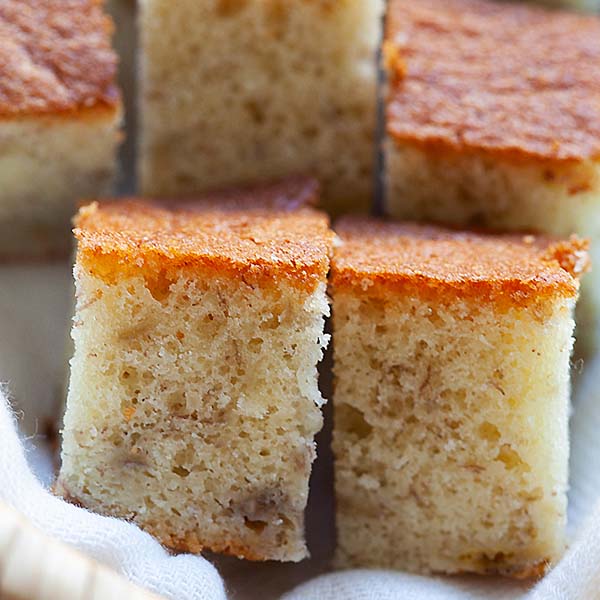
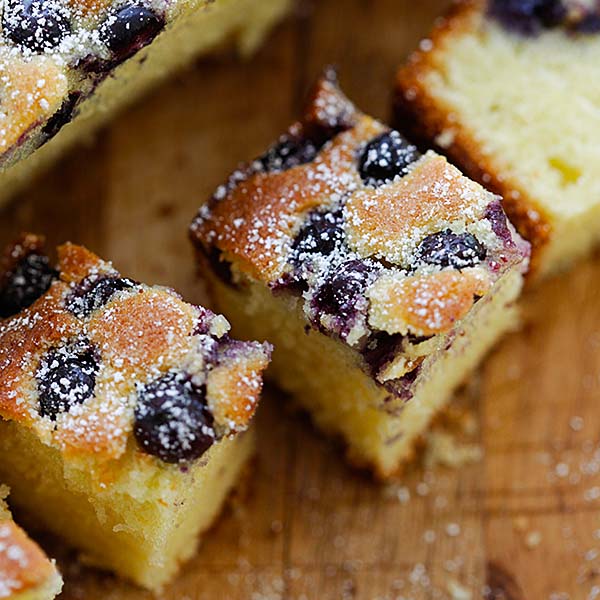
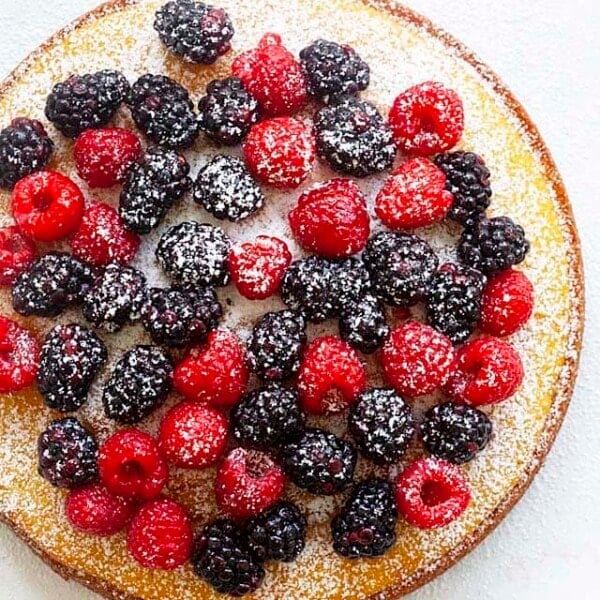






Btw any chance you’ll be sharing the recipe for Japanese Soft Cotton Spongecake any time soon? :p
Thanks for the recipe! Will try soon!
Hi I’ve tried this recipe twice in one day and failed both times. They turned out shriveled. The meringue was good,looked like yours in the llink. Could it be the folding? Do you have photos to show how to fold?
hye.. if I don’t have any cake or superfine flour, can I just use the all-purpose flour to substitute it?
tq
Yes should be fine.
i tried this today and the cake look so pretty, but when i cut into it, the bottom 2/3 has the texture of cheese, too dense…what did i do wrong? I notice that i couldn’t get the meringue to be thick enough, a little on the runny side…could this be why the cake has the texture of ‘cheese’?
You have to make the meringue to be soft peaks like the picture linked from in the recipe section.
Hi mine is no wrinky the cake is soft it didnt shink after i take out from the oven but it didnt rise as i expected and why the cheese went down and separated the cake batter . it looks like i made a steam flan japanese soft cheese cake. What seem to be the problem?
You didn’t beat the egg white correctly.
Are the patterns dusted with icing sugar? Please advise.
thank you.
It’s Stencil pre-made pattern.
You could place a paper doiley on the cake, dust with sieved icing sugar and carefully remove the doiley. Presto – a lovely design!
This cake is so delish. My favourite. Not easy to make but knowing the right techniques is crucial. I failed first 5 times, my 6th attempt made it right to get the correct texture and not sinking too much when it is done.
However I still couldn’t get the side and top part of the cake smooth looking. The side is slightly wavy and top of the cake is not really smooth. It have fine little bubbling holes.
By the way, what causes this. How to make it right? Please advise. Thank you.
Tried this recipe today and it came out perfect! Thank you so much for sharing.
It is very important to read the notes and follow them!
Hi there, tried this today but my cake shriveled like dried prune n looks so ugly. One thing that happened was I missed out d sugar. What other possibility made my product shriveled? Also the top cracked so I turned down the temp to 140 deg instead will try it again but appreciate if you could give me pointers for correcting my mistakes.
hi Azizah, here is the response from CP Choong, the contributor of the recipe: The ugly looking cake, cracked top are mostly caused by the meringue and the heat. (Remember I also failed so many times). Getting the right stage of meringue is important. Soft peak form and the texture should be silky smooth and bubble-less. This is how it should look: http://www.craftpassion.com/wp-content/uploads/2012/02/Make-Cranberries-Lemon-Zest-Steam-Sponge-Cake-3.jpg.
The cracked top problem means you over beaten meringue which is drier compared to soft peak form meringue, this would cause cracks. Also, sugar is crucial for meringue making. Without the SUGAR, bubbles volume (in meringue) will deflate faster. Your problems were caused by sugarless meringue.
Hi, I made this cheesecake today and followed exactly all the ingredients and method. Baked at 160 deg.C for one hour in a water bath as required.
The cake cracked and the sides were wrinkly…I must admit, I forgot to grease after I lined the base and sides. No where near the image which you posted but it was light and delicious!
Q: What did I do wrong?
Getting the right stage of meringue is important. Soft peak form and the texture should be silky smooth and bubble-less. This is how it should look: http://www.craftpassion.com/wp-content/uploads/2012/02/Make-Cranberries-Lemon-Zest-Steam-Sponge-Cake-3.jpg.
The cracked problem means you over beaten meringue which is drier compared to soft peak form meringue, this would cause cracks